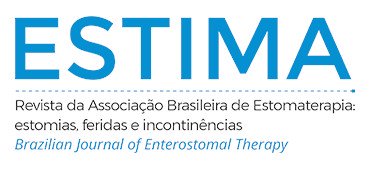Vaginal pessaries in urinary incontinence: integrative review
Palavras-chave:
Urinary incontinence, Pessaries, Nursing, StomatherapyResumo
Objectives: To analyze the types of pessaries, indications and impact in the treatment of urinary incontinence (UI). Methods: This is an integrative review with publications from 2007 to 2017 indexed in the Biblioteca Virtual em Saúde, Medical Literature Analysis and Retrieval System Online databases, Scopus Info Site, Cumulative Index to Nursing and Allied Health Literature and Web of Science. Results: Eight articles were selected. The pessaries indicated were the dish, ring, Uresta®, and Contiform®. The reduction or resolution of stress UI in women was observed by analysis of objective parameters such as urodynamic evaluation and quality of life questionnaires. Economic viability was highlighted. Disability, difficulties in use, discomfort, and maintenance of urinary losses were evidenced among the reasons for non-adherence. Advanced prolapse and short vaginal length were predictive of failure. Adverse events were identified in low incidence: urinary retention and leukorrhea. Conclusion: Pessary therapy is effective in the treatment of SUI when accompanied by trained professionals. Individual characteristics and perceptions about the device are determinants of therapeutic success. Studies of greater sampling, follow-up time and quality, as well as stimulation to national publications, are necessary for the investigation of objective measures of UI, clinical and demographic factors in relation to the success of the pessary.Downloads
Não há dados estatísticos.
Métricas
Carregando Métricas ...
Downloads
Publicado
2019-05-14 — Atualizado em 2022-03-04
Versões
- 2022-03-04 (2)
- 2019-05-14 (1)
Como Citar
1.
Oliveira PD de A de, Somense CB, Barros NA de, Greghi E de FM, Alexandre NMC, Dantas SRPE, et al. Vaginal pessaries in urinary incontinence: integrative review. ESTIMA [Internet]. 4º de março de 2022 [citado 19º de dezembro de 2025];17. Disponível em: https://www.revistaestima.com.br/estima/article/view/661
Edição
Seção
Artigo de Revisão
Licença
Copyright (c) 2019 Revista Estima

Este trabalho está licenciado sob uma licença Creative Commons Attribution 4.0 International License.

























